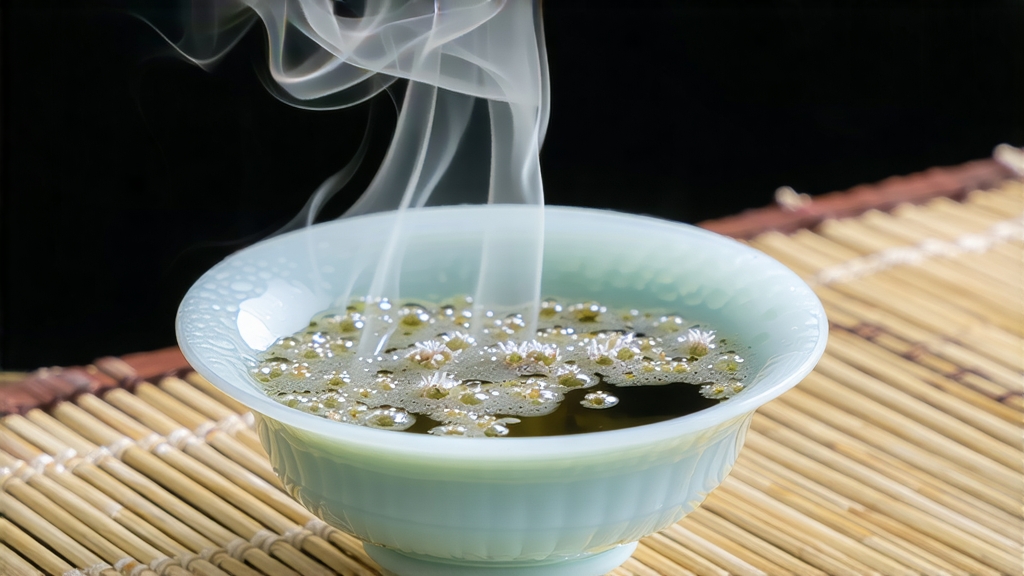
Tucked into the northeastern corner of Fujian Province, where the Wuyi Mountains exhale cool mist over terraced groves of Camellia sinensis, lies the ancestral home of the most delicate expression of Chinese tea: Bai Hao Yin Zhen, literally “White Hair Silver Needle.” To the uninitiated it may look like a handful of pale twigs, yet in the palm of a seasoned tea master those slender buds become luminous slivers of early spring, each one wrapped in a downy cloak so fine it resembles frost captured at daybreak. International tea circles often praise the robust flavors of pu-erh or the floral fireworks of oolong, but Silver Needle whispers rather than shouts, inviting the drinker to slow the tempo of modern life to the cadence of mist, river and mountain.
Historical records first mention “white tea” during the Song dynasty (960-1279), when imperial tribute lists catalogued a “white preparation” made from the youngest buds. The name did not refer to color alone; it denoted a minimalist processing style that allowed the leaf to remain virtually untouched, thereby preserving its silvery trichomes. By the late Ming dynasty the technique had migrated to the coastal counties of Fuding and Zhenghe, whose terroir—acidic granitic soils, abundant rainfall, and a maritime climate that moderates temperature extremes—proved ideal for the Da Bai (Large White) cultivar. Locals recount that during the Qing era a county magistrate presented Silver Needle to the Guangxu Emperor; the sovereign, struck by the elegant appearance and honeyed aroma, decreed that only unopened buds plucked before the Qingming festival could bear the name Yin Zhen. Thus began the tea’s reputation as the “gentle aristocrat” of the white tea spectrum.
Unlike green tea, which is pan-fired to arrest oxidation, or black tea, which is rolled and fully oxidized, Silver Needle follows a laconic two-step choreography: withering and drying. On clear March mornings pickers fan out between rows of Da Bai bushes, plucking only the fattest buds whose tips have just emerged from the apical leaf scale. Speed is essential; the bud must reach the barn before the sun climbs high enough to bruise its fragile enzymes. In the traditional method, bamboo trays are laid on racks inside a sun-warmed loft where cross-breezes, scented subtly of pine and sea salt, wick away moisture for thirty-six to forty-eight hours. Modern facilities replicate this climate with gentle conveyor dryers set to 28-32 °C, yet many master makers still insist on a final sun-bath, arguing that ultraviolet rays catalyze a mild oxidation which amplifies the tea’s signature “milk-sweet” note. Once moisture drops below 8 %, the buds are slow-baked for less than ten minutes, just enough to fix the aroma without caramelizing sugars. The entire process is so restrained that Silver Needle retains the highest catechin-to-theaflavin ratio of any Chinese tea, explaining both its pale liquor and its reputation as a repository of antioxidants.
Classification within the white tea family is refreshingly straightforward: the whiter the leaf, the higher the grade. Bud-only lots are designated Yin Zhen; the inclusion of one leaf immediately demotes the batch to Bai Mu Dan (White Peony), while two leaves and a bud become Shou Mei (Longevity Eyebrow). Within Yin Zhen itself, three micro-grades exist. “Imperial” consists of buds longer than 2.5 cm, uniformly straight, with a silvery sheen unbroken by green patches. “Grade A” allows buds down to 2 cm and tolerates the occasional light olive tint where a leaf scale clung too long. “Grade B” may include slightly curved tips or a faint russet edge, the result of an extra afternoon in the sun. Yet even the humblest Yin Zhen outranks the finest Bai Mu Dan in price, because one kilogram demands the culling of roughly thirty-eight thousand individual buds—an entire day’s harvest from five experienced pluckers.
Western consumers often brew Silver Needle like a green tea, with water just off the boil and a three-minute infusion, then wonder why the liquor tastes thin. The fault lies not in the leaf but in the protocol. Chinese sommeliers treat Yin Zhen as a “cool” tea: water should rest until tiny bubbles no longer rise, around